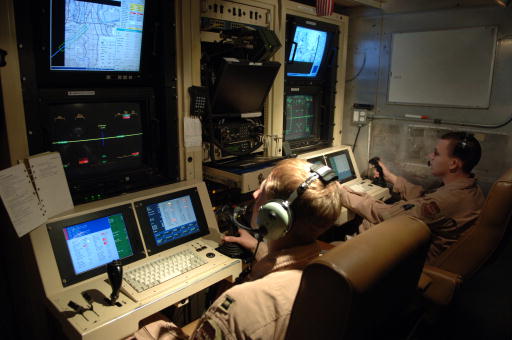Gen. Norton Schwartz, nominee to be the next Air Force Chief of Staff, said last week he would “quickly” make a decision whether the Air Force will continue its policy that pilots of unmanned aerial vehicles—the larger sized platforms that perform at medium and high altitudes and carry weapons—must be rated officers. “It may well be that a blend of rated and non-rated operators makes the most sense,” he told members of the Senate Armed Services Committee in the written responses to the panel’s advance questions for his July 22 confirmation hearing. The Air Force has both non-rated and rated personnel flying its diverse family of UAVs, depending on the platform. Small-sized UAVs that operate at the local level are flown by non-rated airmen. However, USAF’s stance to date has been that larger multi-mission, theater-level UAVs, such as the MQ-1 Predator and MQ-9 Reaper, are complex systems that often involve real-time command and control and time-sensitive decision-making for the delivery of ordnance under demanding battlefield conditions. “Qualified rated pilots generally have the training and experience that is crucial to the success of this effort,” Schwartz said. Further, aircraft like the Predator, Reaper, and RQ-4 Global Hawk fly in and through airspace that requires positive control of the assets based on FAA and ICAO rules. Those rules require an instrument-qualified pilot, Schwartz noted, adding that he would assess the arguments before rendering his choice. USAF has cited the availability of trained pilots as a limiting factor in accelerating the fielding of UAV assets. That said, it is still surging additional assets to support operations in Afghanistan and Iraq.
Norton Schwartz, nominee to be the next Air Force Chief of Staff, said last week he would “quickly” make a decision whether the Air Force will continue its policy that pilots of unmanned aerial vehicles—the larger sized platforms that perform at medium and high altitudes and carry weapons—must be rated officers. “It may well be that a blend of rated and non-rated operators makes the most sense,” he told members of the Senate Armed Services Committee in the written responses to the panel’s advance questions for his July 22 confirmation hearing. The Air Force has both non-rated and rated personnel flying its diverse family of UAVs, depending on the platform. Small-sized UAVs that operate at the local level are flown by non-rated airmen. However, USAF’s stance to date has been that larger multi-mission, theater-level UAVs, such as the MQ-1 Predator and MQ-9 Reaper, are complex systems that often involve real-time command and control and time-sensitive decision-making for the delivery of ordnance under demanding battlefield conditions. “Qualified rated pilots generally have the training and experience that is crucial to the success of this effort,” Schwartz said. Further, aircraft like the Predator, Reaper, and RQ-4 Global Hawk fly in and through airspace that requires positive control of the assets based on FAA and ICAO rules. Those rules require an instrument-qualified pilot, Schwartz noted, adding that he would assess the arguments before rendering his choice. USAF has cited the availability of trained pilots as a limiting factor in accelerating the fielding of UAV assets. That said, it is still surging additional assets to support operations in Afghanistan and Iraq.
House, Senate Unveil Competing Proposals for 2026 Budget
July 11, 2025
Lawmakers from the House and Senate laid out competing versions of the annual defense policy bill on July 11, with vastly different potential outcomes for some of the Air Force’s most embattled programs.